Podcast: Play in new window | Download
Show Notes
In this episode, we discuss how to find the right plants for your space. Are you overwhelmed with what to plant in your yard? Does the nursery always seem to let you down?
Topics:
- Reason
- Right plant = less work
- Happier
- Fewer problems
- Better growth
- Better foliage & blooms
- Right plant = less work
- Know your conditions
- USDA zone
- Existing soil conditions
- soil test
- extension office
- texture
- clay, loam, silt, sand
- structure
- aggregates
- Fertility
- pH
- compaction
- depth
- soil test
- Water
- Frequency
- Quantity
- Drainage
- Sun exposure
- Root expansion space
- Wind exposure
- Allelopathic plants?
- Walnut, oak, hackberry, grass, etc.
- What is your current chemical use?
- Find your plant
- What plant can meet aesthetic desire and fit space conditions
- What plants are non-invasive and low maintenance
- Ohio Plants
- Herbaceous perennials
- Prairie nursery
- Conditions to consider
- Max dimensions
- Foliage density
- Color
- Bloom
- Texture
- dispersal
- Sun
- Soil
- Water
- Fertility
-
- Not always necessary
- Pest & Critter resistance
- Root pattern
- Pet resistance
- Plant compatibility
- Growth
- appearance
- Not always necessary
Links for today’s episode:
I’m Ben Hale your virtual design guide
to help you and your family have a
healthy beautiful landscape with less
work what’s up and welcome to episode 9
of the aesthetic ecosystems podcast we
are creeping up on double digits guys
one more episode and we’ll be the
episode 10 I’m super stoked about that
but let’s let’s crank out a good one
today episode 9 is gonna be a great one
today we’re gonna be talking about what
are the right plants for your space
we’ve kind of gone through a progression
here of talking about why low
maintenance landscape design will help
you save time and why it’s important for
you and your life and how it can
actually change your life if you use
that time appropriately we talked about
how to make a healthy landscape we’ve
talked about disease problems we’ve
talked about a lot of different stuff
with your existing landscape but let’s
say you ready to you want to slap some
plants in the ground I get it
I love planting plants and it’s really
important to make sure you’re getting
the right plant for your space so that’s
what today’s episode is about come on
that’s fun stuff right I just want to
say too last episode I was definitely
feeling towards the end I was definitely
feeling a little horse my voice is still
recovering from a little bit of a head
cold that I had and and so hopefully
today we’ll be able to crank out a good
one for you I’ve got my herbal tea here
man you know what I have to put in a
plug I guess a shameless plug for
traditional medicinal –zz as a brand of
tea I’ve been drinking especially when I
get sick they have this one called a
throat coat of all names and basically
it uses some different herbs I think
it’s marshmallow root that has kind of a
slimy texture to it and and man it
actually really helps your your throat
kind of feel better and so it’s kind of
what I’m chugging down here today as
we’re talking it’s got some
the herbs in it that help heal your heal
your throat as well as kick your immune
system into gear and and I’m I’m
enjoying it and one of the things I
actually love about them is is their
little tea bag tags have little quotes
on them and today’s is certainly fitting
it says plant kindness and gather love
and man what’s more fitting for for
determining what right plants to put in
your space and and so it’s just that’s
got to be more than coincidence right so
a great tea here and great podcasts
coming up so grab your tea as well and
let’s enjoy a good podcast and let’s get
right into it so what are the right
plants for your space and what I’m
talking about your space this is
anything in your landscape so we could
be talking about a garden that you’re
putting in we could be talking about
something you want to put in between the
paver stones to kind of fill some voids
there or we could be talking about your
lawn we’ll get into more details about
establishing and planting a lawn and
what’s the right type of lawn and how
much lawn to have and and all those
things in later episode but for today
you know these considerations hold true
for your lawn as well there’s a ton of
different grass varieties with a ton of
different maintenance levels to them but
also just adapted to different
conditions and different regions so this
certainly holds true as well for for
this so I’ve got today’s episode broken
out into three primary categories the
first is the reason for determining the
right plant for your space secondly
knowing the conditions of your space and
third knowing the right plant for your
space so when it comes to why you should
look for having the right plants in your
space it all comes down to what we’re
talking about with the whole aesthetic
ecosystems brand this is about saving
time for you saving time for your
landscape and having a healthy landscape
and a healthy you at the same time this
all ties together so the less healthy
your plant is the more work you have to
do to maintain it
or if you don’t choose the right plant
the more work you might have to do to
keep it in a certain condition say like
a pruned tree if you’re not selecting
the right plant likewise if you have an
unhealthy plant you might have to treat
it with certain things and and through
that you know you have some potentially
unhealthy chemicals coming through your
landscape as well that can increase the
risk of health problems for your family
at the same time so just it really does
all come together with having the right
plants for the right specific location
as well as the the region you live in
and that’s what we’re talking about
today so when it comes down to it the
synthesis is this is that the right
plant equals less work so your plants
are happier it has fewer problems it has
better growth and also most of the time
it also has better healthier foliage as
well as better blooms and so who doesn’t
love better blooms when it comes to when
you’re planting flowers or attractive
plants in your landscape that pretty
much sums up the reason we want to have
the right plant in our space so we
understand that now how do we know what
is the right plant what is the right
space for your plant it kind of goes
both ways right say you want a specific
plant knowing the exact spot in your
landscape that it will most likely do
the best is very important and
alternatively knowing what you want to
plant a certain space and knowing what
plant to put in that space is very
important as well so we’re kind of more
focusing on that piece but you can also
keep in mind the first piece like say
you want a specific plant you can
determine how it’s going to do best
based on the conditions you have
throughout your landscape so even though
you might have a consistent type of
condition like consistent rainfall
throughout your landscape you do have
different areas where the rain becomes
concentrated and less concentrated so so
that makes an impact as well as all
these other conditions we’re going to be
talking about today so let’s get right
into it
we talked about some of this yesterday
just before I get into it and yeah I
tricked you that right so
we talked about some of this yesterday
with determining the root cause of
certain plant problems and there’s
that’s why we’re talking about in more
depth today is is if you determine the
right space and know the conditions of
your site
well you prevent some of these problems
in the long term so that’s how this kind
of goes hand in hand with the previous
episode and also helps you of course
save time so first make sure you know
what USDA zone you live in I’ll provide
a link in the show notes for a USDA zone
map you can also just quickly google
this you know type in your city or your
nearest big city and type in USDA zone
USDA is the US Department of Agriculture
and they’ve broken the United States
into multiple zones and if you live in a
different country you can also look up
there’s other similar distributions of
how to plant your plant so just type in
like planting conditions zone or
something and and most likely you’ll get
some information on your country or your
region and what plants can do well in
that space but for the US there’s this
USDA zone map and basically it’s a
generally speaking it’s a horizontal
distribution going up the latitudes from
south to north in the United States so
basically it’s it’s warmer to colder and
it breaks them up based on the low
temperature I think it’s something I
don’t quote me on this but it’s
something like for the 10-year average
what’s the what’s the average lowest
temperature that you get in the summer
and that’s how the zones are determined
I think it’s something like that and
essentially that tells you what types of
plants can can survive in that cold
temperature and similarly what plants
can survive in that heat that comes with
the the higher low temperature in the
south so for example fruit trees they
require a certain amount of cold hours
and a lot of deciduous trees as well
require similar things in order to grow
properly and to produce fruit as well so
USDA zone is very important just for
getting a general idea of whether or not
the plant grows well in your space most
plants even on the tag when you purchase
them say at Home Depot has a list of
what zones the plant can grow in and
just a quick note since I mentioned Home
Depot’s so some of these big-box stores
they’ll have plants there that you you
would assume that they’re always you
know going to grow in that space but
it’s actually important to check the
conditions on the tag that’s listed as
well as do I hope you have done the
research before you get to if you’re
purchasing plants say at one of these
big box stores or at any nursery for
that matter that you check the what you
hopefully know what plant you’re getting
before you get there and and part of
that is these conditions sometimes they
actually have plants there that don’t
really do well in your your climate so
it’s important to check that because
part of what nurseries and especially
these big stores even say Walmart right
sells plants some of these big stores
they they sell you what the consumers
want but it’s not always a plant that’s
well adapted to your space and this
isn’t just for the temperature piece
another good example is is there’s tons
of plants that are sold here in my
region and that are meant to grow in
acidic soils like rhododendron is a
plant that is is generally speaking it
comes from mountainous regions that are
more acidic soils east of us and they
don’t actually do very well without
continuously amending the soil here so
I’m not just talking about temperature
here but also other conditions as well
so that’s kind of a bit of a side here
like gonna watch out make sure you know
what you’re getting before you get to
the store and don’t always trust that
because it’s on the Shelf there and
because it has a price tag on it it
doesn’t necessarily mean that it’s going
to grow well even in just our climate
not specifically the space you’re
planting in okay so USDA zone make sure
you know it it’s very important and next
the soil conditions so I really
recommend you get a soil test done
you know what I’ll probably
the future do a little short thing on
I’ll get a soil test done for our yard
and just show you what kind of how to do
it what kind of report you get out of it
but for now essentially what you do is
you look up your local Extension Office
so each county has this office it’s
usually part of the whatever regional
State University you have so for for
southeastern Ohio we have an Ohio State
University or the Ohio State University
Extension office for Hamilton County in
Butler County
so the counties around us each county
has a separate office and these offices
there they’re meant primarily for
agriculture but they’re they’re there to
serve the public as well and so they can
answer questions on your your region
soil and as well as do these specific
soil tests and so you can send it in a
sample of your soil they usually give
you instructions on how to take the soil
sample we can get into that in the
future as well but and then what you get
back is a report and that tells you
different conditions about your soil and
these conditions can be very important
for when you’re planting your garden and
so if you have a specific area you have
in mind
you want to take the sample from that
space because you might have very
different soil say in the in your front
yard versus your back yard or a wooded
space versus a front facing slope of
your lawn so the more this does cost
money to do the more you can afford and
feel comfortable doing the more samples
you have the better but of course don’t
overdo it but usually sending in a few
samples a different spaces gives you a
very good idea of what type of soils you
have I’m gonna do a big episode later on
soil both the chemistry’s that we’ll
talk about and some of the physical
characteristics here as well just in a
short bit but I’ll go into greater
detail and also we’ll talk about the the
living component of soil as well which
is very important but for now I just
want to give you a few of these
characteristics just so you’re familiar
with them the more you hear them the the
better you’ll retain it and and this is
all important stuff that you’ll get as
part of this soil test that you
so one is the texture this is a pretty
common classification and basically
texture equals particle size is the the
short way to think about it so your soil
texture some of the terms you’ll hear is
clay silt loam sand so these are all
different characteristics of different
sizes of particles and usually a loam is
considered a mixture of some of these
different types of materials so your
clay is your very fine particles silt is
emitting a medium range particle and
sand is your more coarse particles and
that’s all the detail we’re going to
talk about right now but in general
though the more hybrid mixture you have
the better but that being said if you
have say a dense clay soil going out
there and dumping a bunch of sand on
it’s not necessarily a good idea and so
this is more to understand what what
your base soil is the chemical aggregate
size of your that’s not the right term
actually so your particle size what what
the particle size of your your inert
soil is and that will help you determine
what types of plants do well in that
space structure structure determines
what types of clumps your soil forms as
it starts to aggregate so this is where
aggregates are clumps of the mini
particles these the small particles of
your soil and how does that form
different types of soils form different
aggregates and this is just kind of good
for knowing drainage and how it does and
drought things like that it we don’t
want to really get too deep into texture
and structure but that’s kind of what
they mean and yeah that’s all we need to
know for now fertility is the organic
matter generally speaking of your soil
as well as the make up of different
minerals in your soil so your nitrogen
level your phosphorous level your
potassium level are the most common ones
right those are the three big ones that
are usually listed but you also have
tons of other minerals that are very
important in smaller amounts so calcium
iron magnesium it goes on and on there
are a lot of micronutrients
or ions metal ions and such that are
necessary for plant growth and important
for plant growth and usually some of
those are listed not all of them but
it’s good to know and pH is the acidity
this is how acidic or basic or similar
terms are acidic in alkaline your soil
is so the more acidic it is the more
hydrogen ions you have present in your
soil the more basic the more hydroxide
ions it’s probably too much chemistry so
I’ll dial it back basically it’s a good
term to know for certain plants so your
if you take a typical say pine forest
it’s generally acidic soil and if you
take say this is very very broad
generalization but yeah your Pines
generally go in acidic or azaleas
rhododendrons blueberries those are
typical acid loving plants and then your
let’s I’m trying to think of a good
basic is your like say maples general
hardwoods forests
this is a huge broad there are acidic
hardwoods for sure but yeah I don’t know
how good other good examples to give you
right now so let’s move on
compaction this is how compressed your
soil is so the more compacted your soil
the less able it is to hold water in
trap it and the more it holds water the
more of course moisture you have there
and the usually the better plants do in
that space also not just water but the
more oxygen and air circulation the soil
has which is healthier as well so the
more of that less compaction you have
the more healthy your soil is generally
unfortunately most developed spaces are
pretty compacted soils simply just based
on the nature of development so as
construction is occurring you have heavy
equipment rolling over stuff and let’s
put it this way when you walk on top of
soil you actually compact so just the
pressure of your fee
compact soil so you can imagine when we
have heavy equipment going over stuff
it’s doing a pretty extensive job about
compacting soil so when you have
compacted soil it’s a little tougher for
plants to grow but it’s good to know
what level of compaction you have and
also your soil depth is and specifically
here I’m talking about topsoil as well
as subsoil so your topsoil is your space
that has organic matter cycling through
it and it’s where most of the life
occurs most earthworms are in here and
you know beetles and stuff your topsoil
is you know the deeper it is the better
for sure and usually having just even a
say an inch of topsoil is really good
compared to some of these compacted
sites that we live on the more topsoil
you have the better for sure and then
your subsoil is more your there’s a lot
less organic matter in the subsoil and
this is more your where a lot of
physical structure and chemistry is so
this is your clay or your sand subsoil
and this usually there’s multiple zones
of it but it usually goes down hopefully
a few feet and down to your bedrock and
so it’s also good to know how far down
your soil goes how what’s the depth of
your soil and you can usually get some
general understanding of this if you
aren’t willing to go out and dig a deep
hole in your yard
or if you haven’t done that in the past
you can usually find some information
with your Extension Office as well and
or your local soil survey that sometimes
is a county thing and they’ll help you
understand generally speaking how deep
until it till the bedrock and also the
water table that’s also helpful so if
you have a hard pan or bedrock that’s a
few inches below you might have a tough
time growing some plants I’ll be honest
and so it’s really good to know that
before you’re getting into this stuff
okay
that’s most of the soil bit let’s move
on to water so water of course is very
important and knowing how much when and
where it goes on your property are
important things so how much is
basically how frequent do you get
precipitation in what form and at what
quantity so this is where knowing if you
gets a torrential downpours twice a year
and that’s most of your water that’s
very important to know so it’s kind of
like a flood / drought condition and
there’s plants adapted to those types of
locations as well as you have say in the
Pacific Northwest you get a lot of rain
over a long period of time for a lot of
the year so you know that’s considered a
temperate rainforest area so the the
plants that grow there are much
difference and then say the plants that
grow in southern Texas so it’s important
to know your precipitation quantity and
frequency and patterns throughout the
year and you can find most of this stuff
online pretty easily as well when you’re
talking about your specific site it’s
good to know the pattern of drainage
across your site so when it’s raining
where does the water go where does it
run away from quickly so this is your
slopes usually right and it goes much
faster across slopes that are compacted
as opposed to spaces that really soak up
the water as it falls so that’s your
good healthy soils if you have a say a
forest in space or a really mature
prairie space on your property that has
really good soil it it might soak up
really well and you don’t have tons of
runoff so so you might have a slope that
actually if as it’s a medium slope you
might actually retain a lot of the water
there over a longer period of time if
you have good soil but so where does the
water runoff so these are your if you
have a lawn with a slope it’s gonna run
out there pretty quickly and then where
does it pull up where does it capture
and these are your wet spots you know
after a rain go out there after a big
rain and take a look around and see
where it’s there’s still water sitting
around and where there’s less water and
and this really helps you understand
where to put for one where to put your
lawn
where’s going to be the most comfortable
space for walking
throughout the year even after rains and
where’s your grass can do best because
they like soils that aren’t saturated
completely for long periods of time and
then where are you gonna put your
gardens that are say water tolerant
where are you going to put your gardens
that are drought tolerant and this is
very important for figuring that out
okay a couple other things to talk about
here I touched on them in last episode
but I wanted to touch on them again
because these are very important too for
for preventing the mistakes that happen
in the future with your plants so sun
exposure where are you getting the most
Sun at what time of year or not just the
most somewhat how is the Sun pattern
throughout the year in this space you’re
considering and you need to figure this
out
so you know what plans to put there so
the sun exposure is very different in
say so let’s just pick out the dates
that are the equinoxes as well as the
the Solstice so the Solstice is when the
days are either shortest or longest so
that’s generally speaking that’s
December 21st and June 21st
so there are opposite times of the year
so you have the most Sun and this is
northern hemisphere of course you have
the most Sun on June 21st that’s your
longest day of the year
where’s the sun shining and you can find
this stuff online if you want to get
precise the more precise you get with
how your Sun patterns throughout your
property the better I’ll just be clear
with this so if you’re planning
especially if you’re planning a big
project this is very important to know
your whole property but if you’re just
planning a garden just get a general
idea of where school where’s the Sun
gonna be on June 21st and at noon and at
the 9 a.m. and at 9 p.m. where’s the Sun
gonna be shining on that space that’s
very important to know for what types of
plants you put there with what solar
exposure and what heat tolerance and
then think to December 21st especially
if you have a growing season during this
time as well so if you’re talking
southern US this is very important as
well so on December 21st how high is the
Sun going to get at noon and where’s the
Sun say at 10 a.m. and where’s the Sun
at 5 p.m. and understand that so
you know what to do with your plants for
the same reason so a solar exposure can
be very important in these cold months
or these shorter day months especially
in the south where you still have plants
growing and then same as is the peaks
also know where the Sun is going to be
at the equinox so this is generally
speaking this is March 21st and
September 21st and on these days where
is the Sun going to be shine as well and
granted it’s going to be kind of the
average of the other two dates that we
talked about so let’s look underneath
the soil now underneath the surface so
your roots it’s very important to
understand especially with the more
mature plants you have the more
perennial they get so this is your woody
plants especially where are the roots
going to go and what type of root growth
do they have you have some trees or even
plants but specifically trees that have
a tap root they’d shoot a straight route
very far down and if they grow mature
and they grow well and you have good
soil sometimes these roots can penetrate
as far as thirty thirty feet deep and
they’ll have side shoots going out as
well from there but but tap rooted trees
can penetrate very deeply so you got to
make sure they have the space to grow
and likewise you have some plants that
shoot out very fibrous roots very far
horizontally sometimes even up to the
surface of the soil and so this is like
your silver maple has a surface roots
that they’ll run out very far beyond the
drip line of your tree and they can
cause a lot of problems if you don’t
plan for it and so knowing where your
roots go is very important especially if
you’re planning a garden that’s near any
sort of concrete structure that’s a
paved surface or a foundation or a
septic system as well as you utilities
so make sure you’re planning properly
for these structures and in a tight
property now you have to be very careful
for these things so make sure you’re
kind of figuring out how your plants
going to grow what’s the mature size of
it
and generally speaking you want to plan
whatever the mature crown height is and
width do you want to plan at least the
same for the underneath the ground and
and based on the root pattern sometimes
more vertical or more horizontal so just
make sure you try and understand that as
best you can similarly make sure you
plan in for the top so powerlines roofs
roof roofs roofs roofs
yes roof we’re gonna go with roofs so
powerlines roofs anything above light
poles things like that other trees so
you want to plan for all this as well as
your plant grows how is it going to
interact with whatever’s above it make
sure you understand the wind this can
really affect tree growth especially as
trees grow and they if you have a windy
site how is it going to interact with
that is it wind resistant plant and can
it thrive in that situation or do you
have to build structures or plant other
plants to help with wind buffering plan
for other plants as well that might
interact that we talked to it more in
depth about this yesterday but I want to
touch on it here as well so if you have
plants that secrete chemicals that
inhibit plant growth so look for what
plants might be compatible with the
plant you’re considering so if you have
an oak tree you know how does how well
does it do with your grass how and or
how well does it do with some bushes do
you want to plant it next to and this is
again where Google is your friend try
and see what you can dig up on it and
figure that out so there’s certainly
plants that secrete chemicals to inhibit
growth of other types of plants and so
it’s very important to figure this out
and last I want to touch on
understanding what your current chemical
use is on your site and if you intend to
continue that so if you do intend to use
chemicals on your yard well how does it
interact with the plants you’re
considering and make sure you can figure
out if it’s going to your chemical use
is going to hurt the grow these plants
or not okay so that’s enough about our
site and
standing our site I want to get into
finding our plant now let’s we’re gonna
just focus on one plant if you’re
planning a whole garden base and you’re
doing this process for each types of
plants you’re considering so yes this
can be a lot of work but this is very
very important to do before you’re going
and digging a hole in the ground and
putting a plant in it so just make sure
you get this piece right and it will
save you tons of work in the future
so first the the biggest thing because
we’re talking about healthy and
beautiful landscapes here right we’re
not talking about ecological restoration
of a stream bed or whatever if you’re
into that stuff that is awesome I love
ecological restoration but our specific
focus here is your landscape right you
want to have something that’s welcoming
attractive and so the first important
piece here is what plant can meet the
aesthetic desire you have and fit the
space conditions so what plan is gonna
look right make you feel happy or make
it look appealing get the desired
condition that you want out of your
landscape what plant will do that and
then make sure it fits the conditions
that you have on your site so I might
love you know the look of of a coconut
tree right but here in Ohio it’s not
gonna happen right so I have to figure
out how I can get the the feel I want of
a specific maybe there’s a desired plant
that I would love to have but it’s not
gonna happen right so what can I do with
the pallet of plants that grow in my
area and that will give me a similar
appeal that I want to have so that’s an
extreme example of course but there are
ways to do something like that even in
my location to get kind of a tropical
feel I’m not gonna get a palm tree right
but I might be able to do something
similar and have that that feel so we
certainly want an appealing plant that’s
going to meet our our needs of
beautification or our desires of
beautification with our yard but while
we’re doing so we also want to make sure
we’re considering plants that are non
invasive or non-operative
and low maintenance at the same time so
making sure that they’re they don’t need
tons of stuff to keep going and to keep
happy but I do want to touch up upon the
piece of non invasive nests
we sacrifice you know environmental
integrity for the sake of beauty and
here we want to try and do both because
we don’t want to be hurting the the
broader landscape of our area just to
just have some and just to have
something appealing in our yard okay so
some examples of this if if you live in
Ohio or nearby say Kentucky or Indiana
or Pennsylvania I certainly urge you to
check out a recent project I completed
with with a lot of low maintenance
designers across Ohio so I did an Ohio
low maintenance plants project where I
gathered all of their favorite plants
that they use in their landscapes and
and put it together into one free
resource so if you live in this region I
certainly suggest you go over to
aesthetic ecosystems calm slash Ohio
plants and check out the articles that
put together there and there’s also a
free download for the resource as well
if you want so if you live in that area
you’re in luck because we’ve got some of
this figured out for you already if
you’re outside this area don’t you worry
because you can figure some of this out
on your own it’s just a little less
accessible sorry but you know putting
this together for all 50 states it’s
kind of a no-go for me at this point but
yeah so if you live in Ohio check that
out and also I do have a resource that
fits most of the u.s. not all of it
especially if you live west of the
Rockies this isn’t always the case but I
really love the Prairie nursery and I’m
not sponsored by these guys or anything
so this is a heartfelt recommendation
the Prairie nursery is a nursery up in
Wisconsin and they’ve done a lot of work
to preserve a lot of the native Prairie
plants from the Midwestern US but in
doing so there’s a lot of plants that
are also just native more broadly to the
eastern US and even the southern US so
they have a great resource a perennial
plant nurse
they do have online shipping so check
them out and yeah just take a look at
them they have a lot of herbaceous
perennials so they don’t have a great
selection of trees or anything like that
but if you’re looking for your kind of
Prairie type plants that you want to put
in your gardens check them out as well
and of course I’ve listed or mentioned
these guys multiple times as well the
Missouri Botanical Garden has put
together a great plant resource if you
want to find plants that fit your space
they have a great resource to do so over
at their website and I’ll put a link in
there the show notes as well alright
with that let’s get into it so when it
comes to considering your plant that
you’re selecting here’s I’m just going
to kind of go through a list of
conditions to consider and then it’s up
to you to figure out how that fits into
your space because every situation is
different
even if we’re talking about two
different locations in the same yard
it’s it’s a different situation so this
is up to you to kind of put on your
thinking hat and and figure out how it’s
going to work in your space
so first the maximum dimensions right
what type of plants are you looking for
you’re looking for a plant that grows
six inches in height and spreads to six
feet wide or are you looking for a plant
that grows you know a tree that grows 90
feet tall at maturity and takes 50 years
to get there which one is it so
understanding your maximum dimensions
height and width is very important next
your foliage density so you do you want
something that gives you kind of dappled
shade or do you want something that
gives you dense shade and this of course
mainly goes for trees that I’m talking
about here that go above us but this
also goes for your low growing plants
that maybe you’re planting a mixed
species garden space and do you want
something that you can see through to
the plants behind it so maybe it
provides a foreground or they maybe want
a denser plant that provides a dense
background and so understanding your
foliage density is is good for that this
is more of an aesthetic aesthetic thing
for for your garden or a functional
thing when you’re talking about your
mature trees what type of color do you
want so
different foliage provides different
colors at different time of year so you
get more maybe you get richer Browns and
reds in the offseason and you get deeper
greens with certain plants or even
reddish color foliage or kind of a
yellow-green foliage so even the foliage
itself gives you different color next
would what about blooms do you want
something that has blooms for how long
at what time of year and what color so
the blooms are important what about
texture so different types of plants
based on their structure and their
foliage provide different types of
texture so you might want something
that’s like a like a grassy plant that
gives you a lot of vertical texture with
with kind of a wisp enos to it or you
might want to unless something like a
Japanese maple with a lot of jagged
texture that that provides some bold
color that’s very punctuated so knowing
your textures that you want in your
garden is important
what’s the dispersal of your plant so
this is to determine how it’s going to
spread is it going to spread by seed is
it going to spread by roots occurring is
it going to stay in place is it going to
slowly spread as it clumps out and forms
bigger clumps so knowing this and
whether it’s going to fit into the space
you need is very important what about
the sun exposure we talked about what
conditions of some we have does you
plant like a certain type of sun
exposure maybe it’s very tolerant of a
wide variety of sun exposure
maybe it’s very intolerant so knowing
this is good
same with soil and your water and your
fertility so I ran through those really
quick but these are all very very
important so knowing the right
conditions that your plant prefers and
like I said some plants are very very
tolerant of a wide variety of conditions
but knowing what their preferred
condition is good as well so knowing if
if this is where it’s going to grow best
it’s going to be happy most likely the
plants going to look better there now
that said especially with certain
herbaceous plants sometimes having the
the wrong or the non ideal condition for
the plant actually gives it a different
different aesthetic appeal so like I’m
thinking of golden
rhod for example right now it’s a common
in Ohio it’s a common undisturbed area
we’d basically but it looks beautiful in
late summer and fall and this is quickly
becoming a plant that’s desired for the
garden as well and when you plant it in
a fertile garden goldenrod has a
tendency to flop over and a lot of these
prairie plants have similar type of
situation happen when they get too happy
basically they’ll grow too fast and they
tend to flop over especially without
stuff around them supporting them up
whereas if they’re in slightly less
fertile soils that maybe are slightly
less moist as well they’ll be more rigid
and they’ll stand straighter and they
they bloom just the same just as much
beauty but you get them to have that
that nice vertical standing plant that
you might want okay now a few more
conditions that you might want to
consider that aren’t always necessary
but depending upon your need just things
that I thought about that you might want
to think about as well is what about
pests and critter resistance so plants
that maybe can withstand a little bit of
munching on from certain insects or
maybe that are not appealing to most
insects similar to when I say critters
especially deer a lot of people have
deer problems so understanding which
plants are not palatable to deer as well
as other critters maybe rabbits or
something what about the root pattern we
talked about root expansion space
knowing your root pattern is important
given the space that you might be
planting in and this also goes for
smaller plants as well I’ve used the
tree example but make sure you
understand it for different plants when
you’re planting a garden knowing if you
plant two plants that have different
root patterns it’s usually more ideal
than having two different plants of
different species in the same space that
occupy the same root pattern because
they might be competing for the same
resources pet resistance so if you have
a dog especially some dogs you know or
more in more likely to eat certain
things and also knowing that your plants
aren’t toxic to your pets as well are
important
what about plant compatibility so both
in growth pattern and appearance so kind
of thinking about the different plants
you’re considering and seeing how they
look together and how they might grow
together so I mentioned kind of the root
pattern as well this is important as
well so knowing how your roots grow with
your different plants and if they occupy
different spots that they are not
competing for the same amount of
fertility okay so that kind of wraps up
what I had today for talking about how
to plant your plant and select it well
not to plant it but how did plan for
planting your plant before you even get
to that point right so before you get
overwhelmed I want to say just just have
fun with this this is a really fun
process if you you kind of get into it
and figure out you know what plants you
like what’s appealing to you and for
what reason and then going to find what
plants actually will just give you what
you want
without you having to do tons of work
you know once you make a plant happy
it’ll do the happy work for you right
it’ll it’ll look great the way you want
it to it won’t cause as many problems
and it’ll be a lot easier to take care
of and you’ll have the beautiful
landscape you want so that’s what we’re
talking about here that’s why to me this
is a really fun process it’s you know
you a lot of times you you discover
plants that maybe you didn’t even know
about that that I had they’re native to
your space or that are well-adapted
exotics and they they give you exactly
what you want a really close to it they
look beautiful and they don’t take tons
of work so if this sounds like a lot of
work to you and you just feel
overwhelmed right now I am offering
consulting so if you go to aesthetic
ecosystems calm slash consulting you can
check out the various options there for
connecting with me and getting a digital
consultation to help you can move
forward and we can really help working
on beautifying your landscape so go
check that out if that sounds like
something you want
and likewise if you just want to work on
saving time right now without having to
make some massive changes or massive
investments go over to aesthetic
ecosystems calm slash 27 hours that’s to
where you want to spell it it’ll take
you there and and check out the free
resource I have there for how to save 27
hours this season with your landscape to
give you more time back to do what you
love and that’s a resource I compiled
just to get you started on this path
this journey to making a positive change
with your landscape so you can make a
positive change with your life ok now
it’s time to talk about the launch party
guys excuse me not party but partay the
launch party is for the first two months
of the show from March 11th through May
help spread a wart spread the word about
the show I really appreciate your
enthusiasm and interest in this show and
I want to get you guys involved and have
some fun while we’re doing it so this is
a chance to have some fun too for us to
get connected to win some prizes and
let’s talk about the prizes before we
talk about what we’re doing so what are
the prizes weekly I’m offering a free
consultation with me Ben Hale which is
normally a $99 value so one person each
week that gets involved in the launch
partay gets a free consultation I’m also
giving away a free offer for one of my
ebooks ten ways to get more beauty with
less work which is a $19 value next the
grand prize there is only one of these
were giving away through this whole
launch party so at the end of the launch
partay the organic lawn care manual by
Paul Tookie so Paul to key himself has
offered to give away one free book to a
lucky winner that’s getting involved in
this launch party and this book is all
about how to manage a healthy lawn from
anything from a golf course style on to
your low-maintenance lawn which of
course is something I prefer here on
this show right
I own this book I’ve read this book
multiple times I’ve given it away it’s a
kind of a tattered and worn version that
I have
and I used some of these practices in my
own lines so I love this book and I
highly promoted as well and you’ll hear
me talk about it throughout the show but
Paul Tookie has been kind enough to
offer a copy of his book as a grand
prize and there’s also a special
surprise for everybody that’s going to
be getting involved in the launch partay
the rolling river nursery out of
California has offered a special
surprise for everybody that’s involved
the rolling river nursery is a USDA
certified organic nursery so I went
online and I looked around for nurseries
that have online availability ship
through the continental US and have some
great offerings and rolling River
nursery is being kind enough to become
involved with our launch party and
they’re not only are they online
availability but they also are certified
organic which means they don’t use any
harmful herbicides or pesticides that
you have to be concerned with your
family about and so what you’re getting
is a safe and healthy plant they also
offer a ton of edible plants and trees
and shrubs cacti and succulents so they
offer several trees and shrubs that are
adaptable throughout the most of the
United States so definitely worth
checking them out and in addition these
guys are also involved with a non-profit
in Southern California to help local
food movements called planting justice
org so if you want to learn more about
them you can go to rolling River nursery
calm and I also want to give a shout out
to Paul to Kies website for his organic
lawn care manual and his other works is
Paul to keep calm PA UL t uke Y and to
sum up guys ok you want to learn how to
get involved with this launch party go
over to aesthetic ecosystems calm slash
pod launch and that’s p OD lau nch
there’s a link in the show notes and
that’s that’s going to give you all the
instructions on how to get involved
there’s two ways specifically to get
involved one is through sharing with
your peeps on Facebook and the other is
through leaving a review on iTunes both
of these are going to help spread the
word about the show and get other people
other friends listening to it as well
and I sure appreciate your help here and
and likewise this
gonna be a fun time so so going over and
– ascetic ecosystems calm / pod lunch to
get involved don’t forget to check out
the show notes there we’ve got all the
links we mentioned in the show today and
also hit that subscribe button if you
haven’t done so already to get more
shows downloaded into your your whatever
you’re listening to right now and with
that guys thanks for tuning in and make
sure you live with passion and make
tomorrow better than today
[Music]

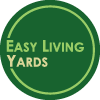
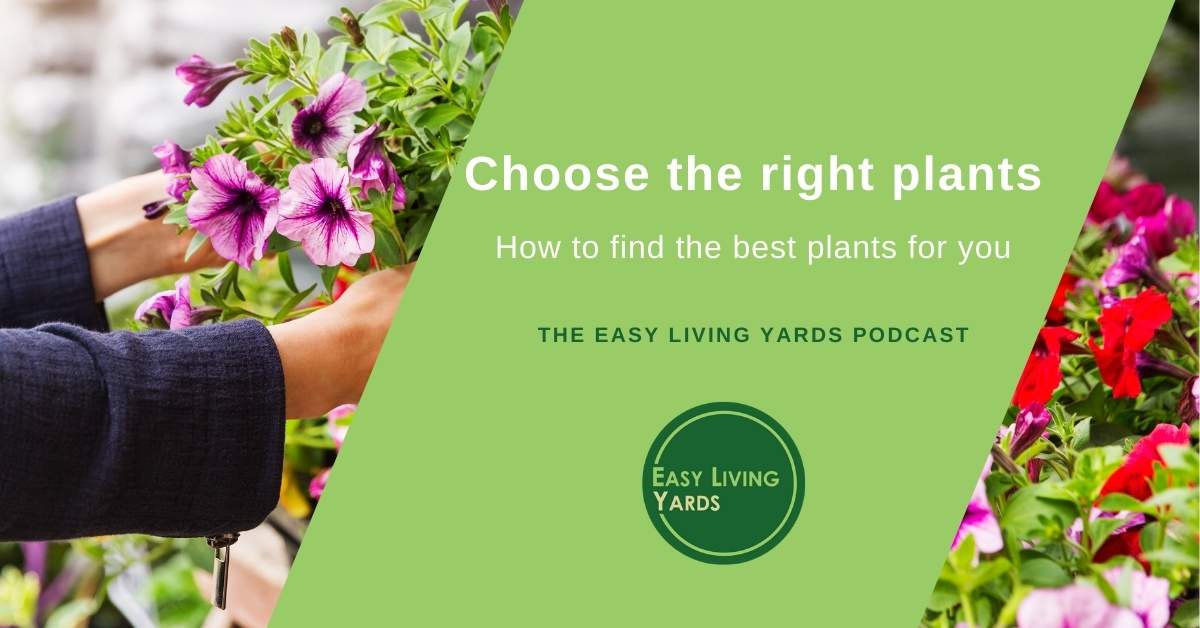
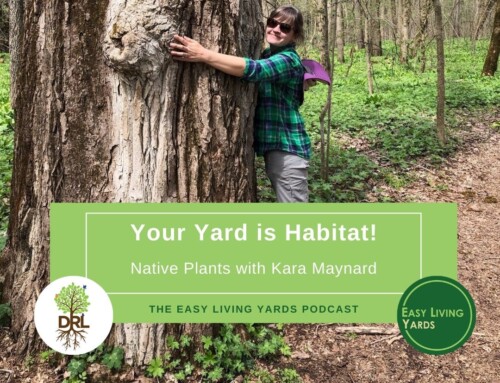
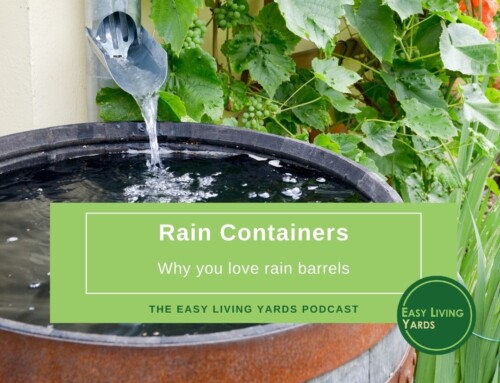
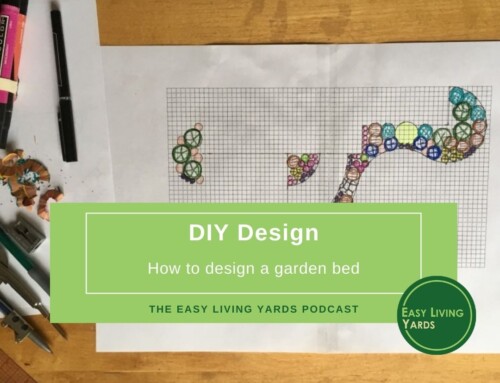

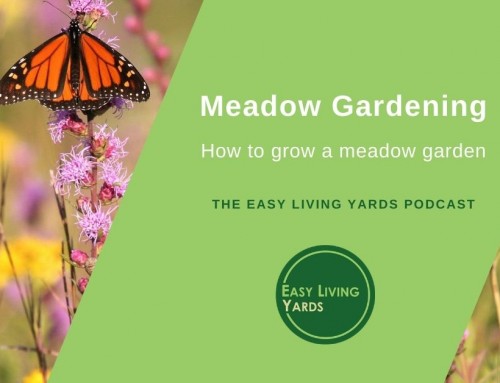
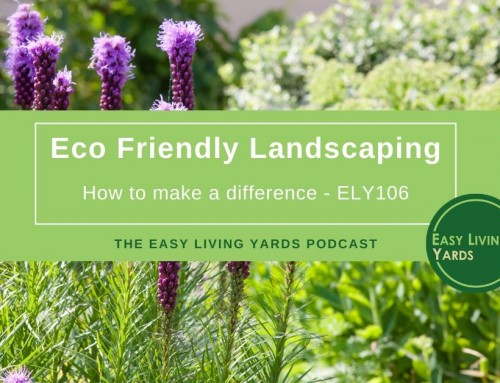
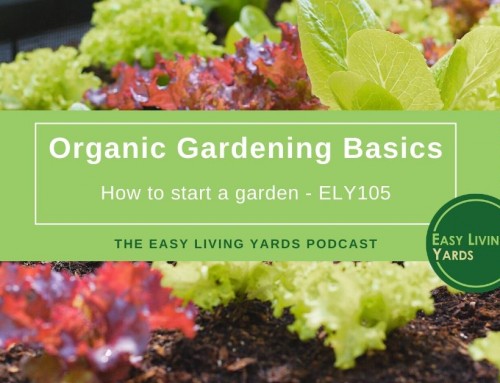
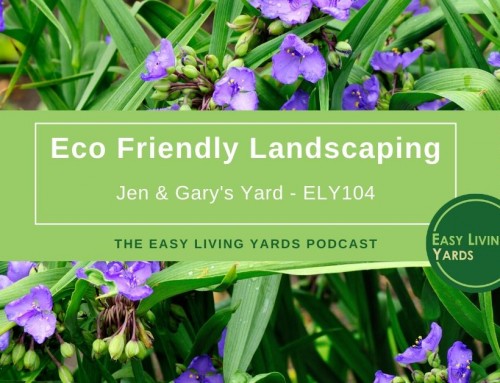

Leave A Comment